Media | Articles
The Capri Was Europe’s Mustang
Ford’s decision to resurrect the Capri nameplate on an all-new battery-electric crossover for the European market makes a great deal of sense. Crossovers are what most people buy, even in the Euro market, and while large-scale EV adoption is taking longer than most thought, it’ll probably happen quicker on the other side of the Atlantic. By putting the well-recognized Capri name on a family-oriented EV, Ford gets to put out a new model with a familiar name. Ford doesn’t need to worry about any legal difficulties with branding, as Capri is an in-house nameplate, and the vehicle will perhaps tweak a bit of nostalgia.
Of course, none of that reasoning makes us like Ford’s decision—certainly not from behind the wheel of a 1974 Capri GT, as the car bursts out of a corner exit on a winding mountain road in Canada. Call it a mini-Mustang, call it Europe’s pony car—this is the genuine article, not a battery-powered platform borrowed from Volkswagen and shot with some heritage botox. This is the real Capri, and it’s utterly fantastic to drive.


The personality of the Capri GT is largely due to its parts-bin underpinnings, which were mostly lifted from the Mk. II Cortina. (Though it is perhaps a less-familiar badge to a North American audience, the Cortina did much to stoke the flames of Fast Ford enthusiasm across the pond.) The mechanicals of the Capri are as simple as they come: engine up front, four-speed transmission in the middle, drive axle out back. The suspension is Macpherson struts in the front and a live axle in the rear, with rack and pinion steering.
What other two-door sedan with everyday roots turned out to be a cultural icon? The original Mustang may have been a grand slam compared to the Capri’s Premier League overtime goal, but both are sporting heroes in their own right. They both offered a range of engine choices, were accessibly priced for a broad audience, and had everyday appeal along with a dash of performance.



The similarity between the pair is no accident. The mission of the Capri was to be Europe’s Mustang, and the same designer was involved in both projects, the Iowa-born Phillip T. Clark. In fact, Ford Europe’s little coupe would have been called the Colt, had not Mitsubishi (and, by extension, Plymouth) owned the rights to that name.
Marketplace
Buy and sell classics with confidence
Instead, the European coupe was dubbed Capri. The name came from a two-door version of the Ford Consul, itself a scaled-down version of a large American coupe—call it the Thunderbudgie. “Capri” was also something of a match for “Cortina”; both names had Mediterranean origins.
The Capri launched in early 1969 and was built in the UK, Belgium, and Germany. In North America, it was sold with the same name but under the Mercury brand, wearing four round headlights and the power bulge hood. (Elsewhere, you could buy a Mk I Capri with a flat hood and square headlights, which looked fairly stuffy by comparison.) Trim levels ranged from poverty spec to near-luxury, but the average Capri was priced to be within the budget of the average person.



The range of engines across all markets is frankly overwhelming—eventually, the Capri was also sold in South Africa and Japan. The most common option was a four-cylinder, which came in displacements from 1.3 to 2.0 liters. There was also a handful of V-6s. One rare standout was the Capri Perana (a deliberate misspelling, for copyright reasons), built by Basil Green Motors in South Africa. These first came with a V-6, but later were fitted with the 302-cubic-inch Windsor V-8 out of the Mustang. The Capri is not a large car, but there was enough room under its long nose for hot-rodders to cram a number of Ford V-8s in there.
Arguably, the engine you want is the V-6. This orange example is a 1974 Capri GT. It wears the earlier bumpers, giving it a cleaner look. Under the hood is a breathed-upon, 2.8-liter, narrow-angle Cologne V-6. When new, in the German-built cars sent to North America, the six offered an unremarkable 119 hp, but these engines are very tunable. Here, with a hotter cam and a few other tweaks, roughly 180 hp is on offer.




In your author’s eyes, the car is just about perfect. Its owner, Geoff Peterson, has a local reputation as a VW specialist (he’s shared his 200-hp Cali Look 1957 drag Beetle with us in a previous article), but he’s always wanted a Capri. When he bought this one, the car wasn’t running, so he fixed it up as a fun daily driver. He plans to do further adjustments here and there, but with the suspension sorted out with poly bushings, and a replacement driver’s seat and dished steering wheel, the Capri drives as good as it looks.
Capris are prone to rust, even in relatively dry locations, so finding them in complete condition is tricky. Ford sold an enormous number of these cars in the U.S. and Canada—something on the order of half a million—and most of them got chewed up by a third or fourth owner and sent to the scrapyard. Petersen says this car gets even more attention and stories from previous owners than his Beetle or Dune Buggy does. It’s impossible for him to stop for gas without talking to at least one person.

Happily, these impromptu discussions have led to a couple of project cars that Petersen has been able to find and rebuild for new owners. Parts for the Capri are relatively available, thanks to how strong their following is across the Atlantic. Used stuff and bodywork are tricky to find, but if you’re willing to pay, a proper restoration is certainly possible.
Like the Mustang, part of the Capri’s appeal is in its long motorsport pedigree. The excellent book Capri, by Jeremy Walton, breaks down these exploits, with some 300 pages of detail on Ford’s European battles with the likes of BMW and Porsche. During its heyday, Capris campaigned on iconic tracks from the Nürburgring to Spa-Francorchamps to Le Mans. Jackie Stewart raced a Capri. So did Niki Lauda.
Names like Zakspeed and Cosworth came to be associated with the hottest Capris on the track, and there were fierce and very collectible road-going models in the European market. A single Capri RS2600 was ordered in 1971 by the Deuce, Henry Ford II, for his son Edsel II to drive to college. It was finished in two-tone silver and blue, and paired a 150-hp, 2.6-liter V-6 with a curb weight of 2250 pounds.
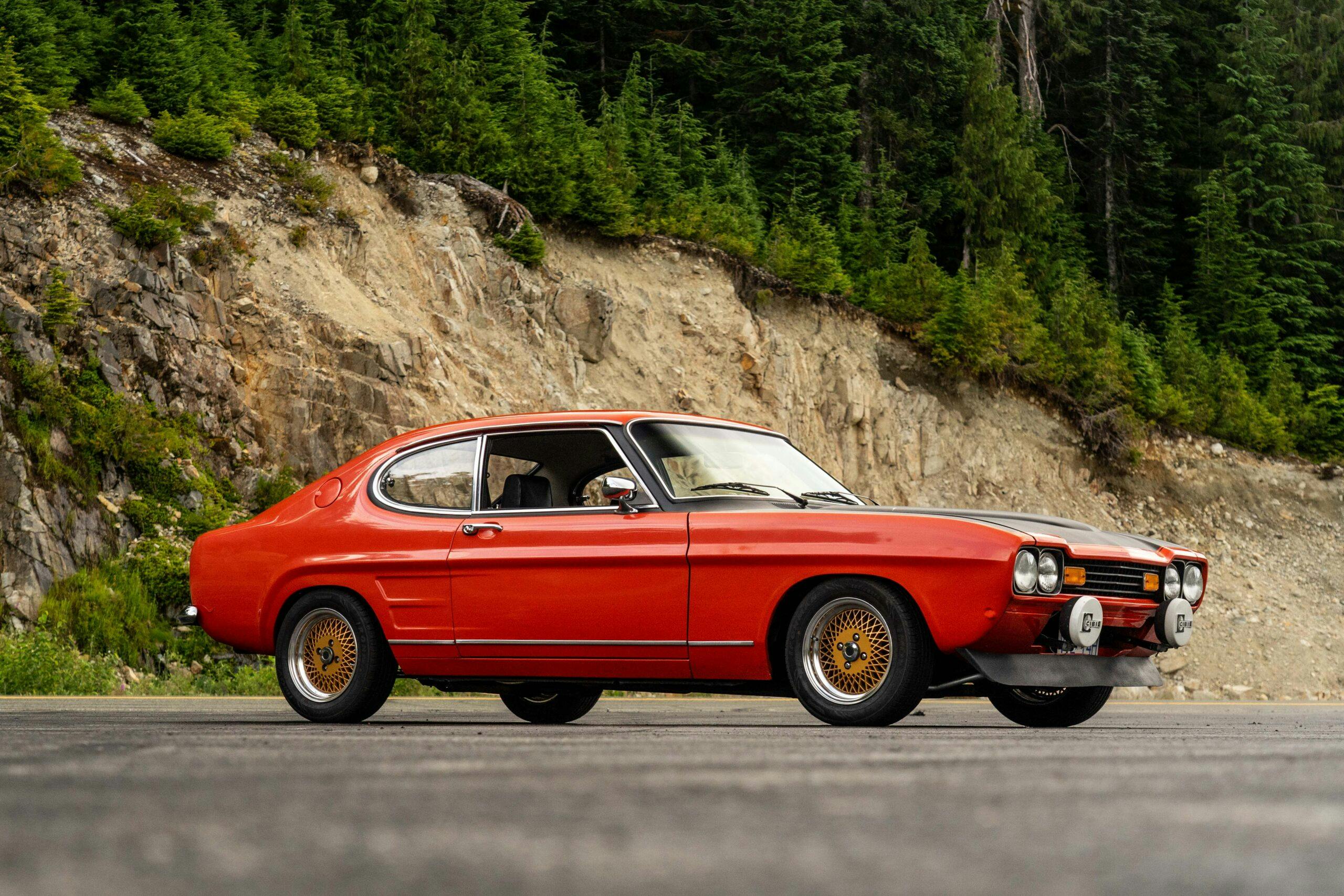
But while the special and racing Capris are fun to learn about and obsess over—a Mustang’s worth of history and heritage, seen through a European lens—what really makes the original Capri such a delight is its simplicity. The new Capri is emblematic of its time. Roomy, fast, comfortable, and silent, it is competence delivered with all the charisma of a toaster oven. The old Capri is small, loud, quick rather than fast. With the four-speed manual, 40 mph feels like 100.
Shortly after our spin on the mountain, Peterson climbed into his Capri and drove it about 250 miles into British Columbia, searching for parts for his latest project. There’s a Capri that makes sense for the world we live in—but there’s another Capri that inspires love, and it doesn’t have a charging plug.



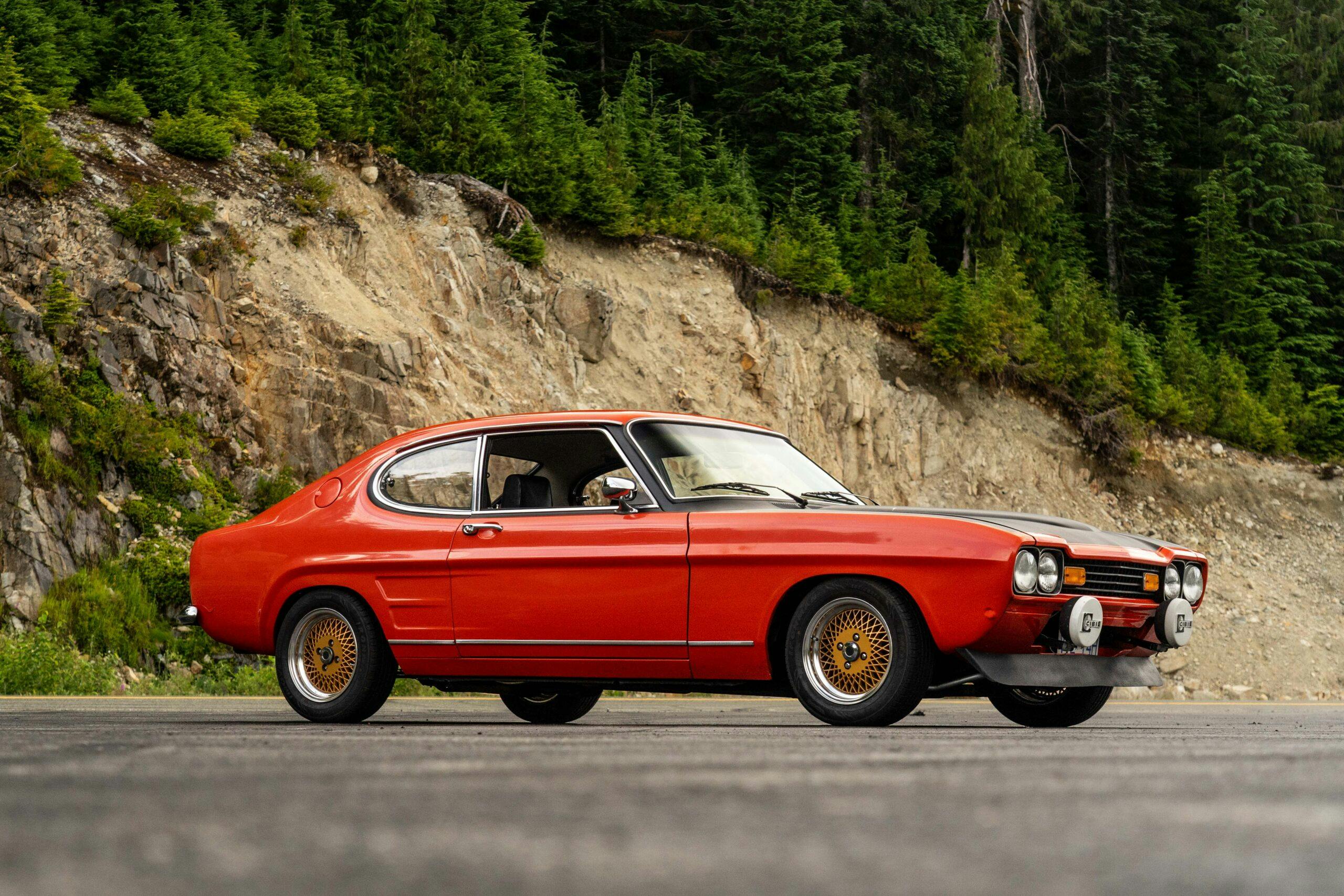





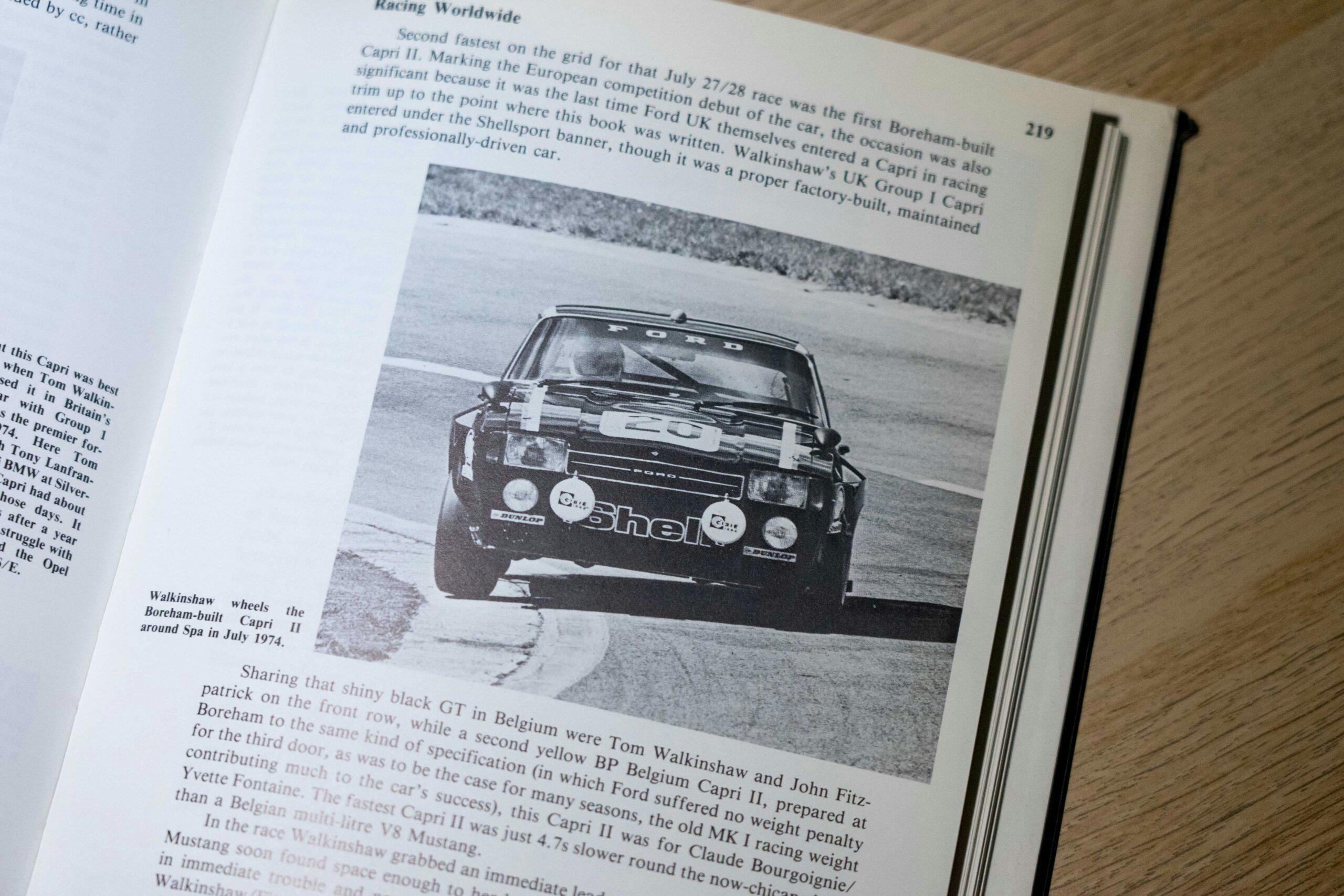


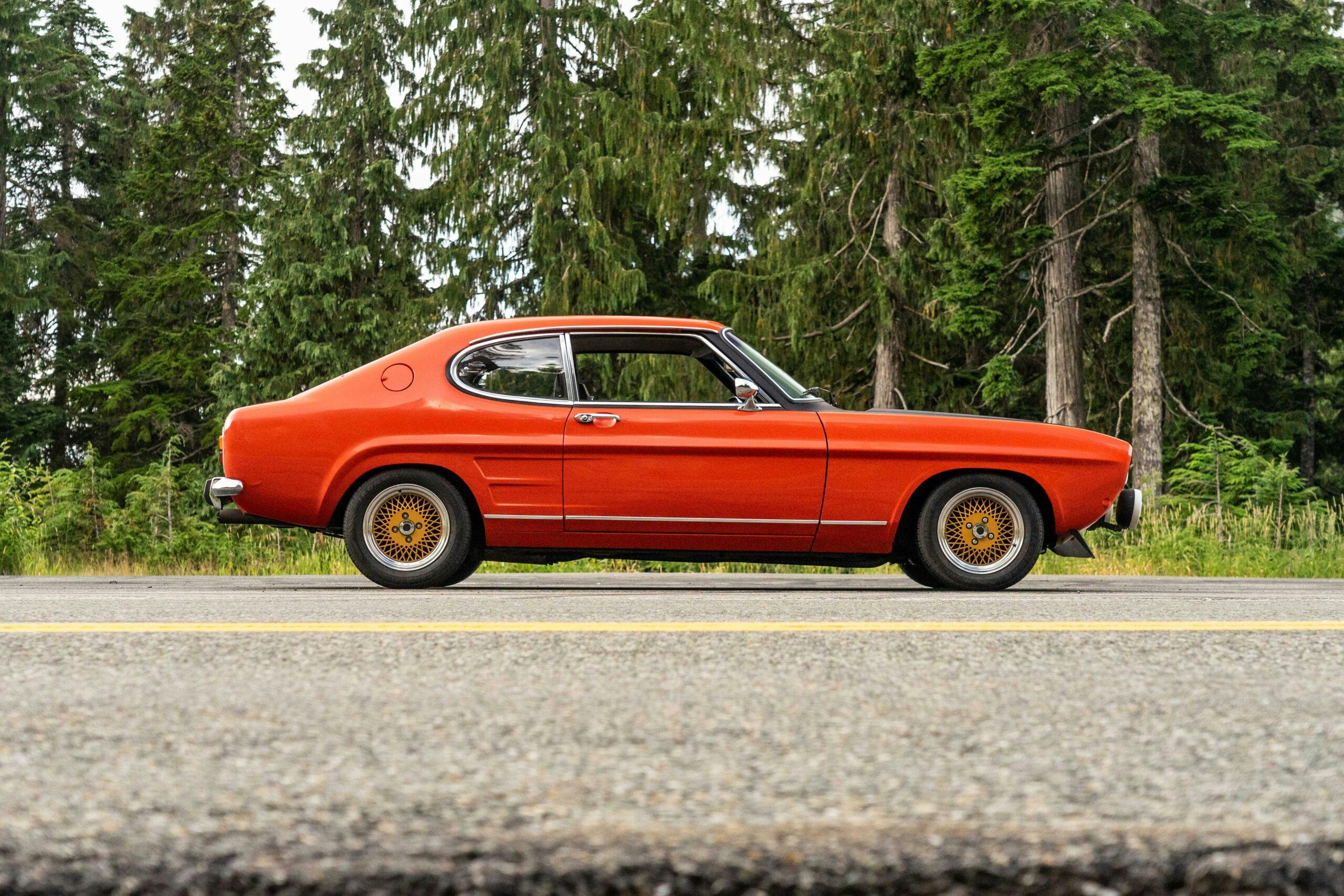

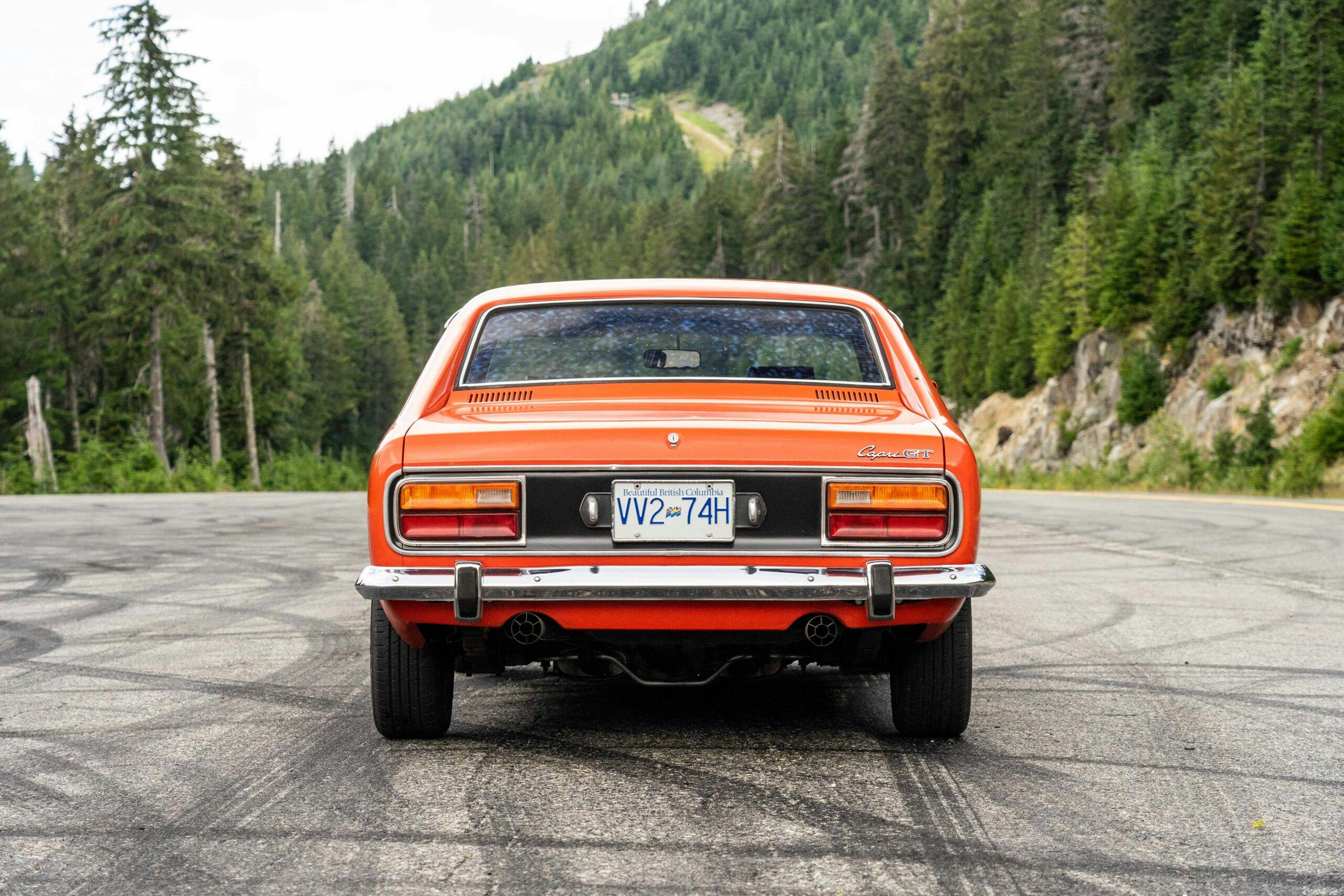
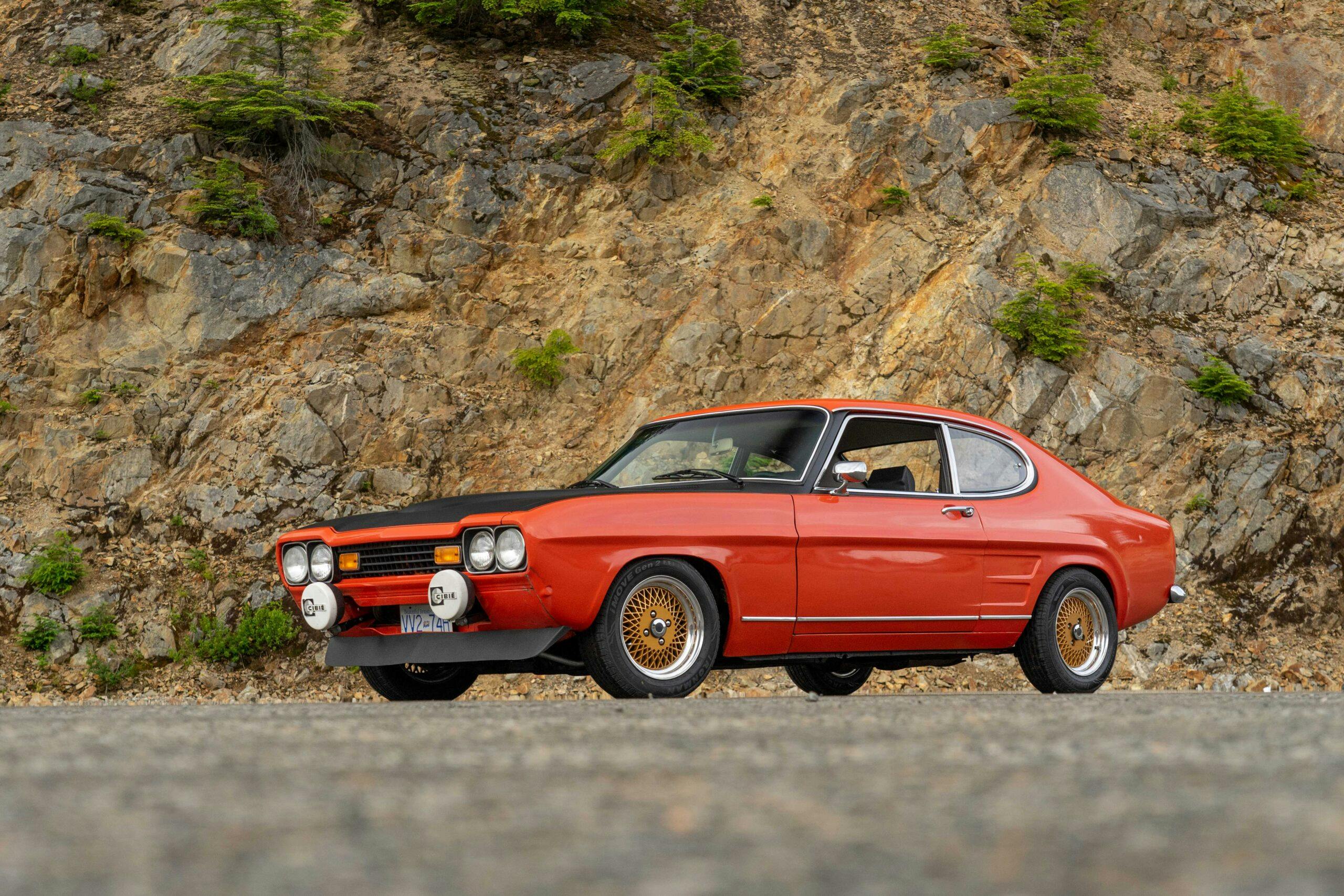
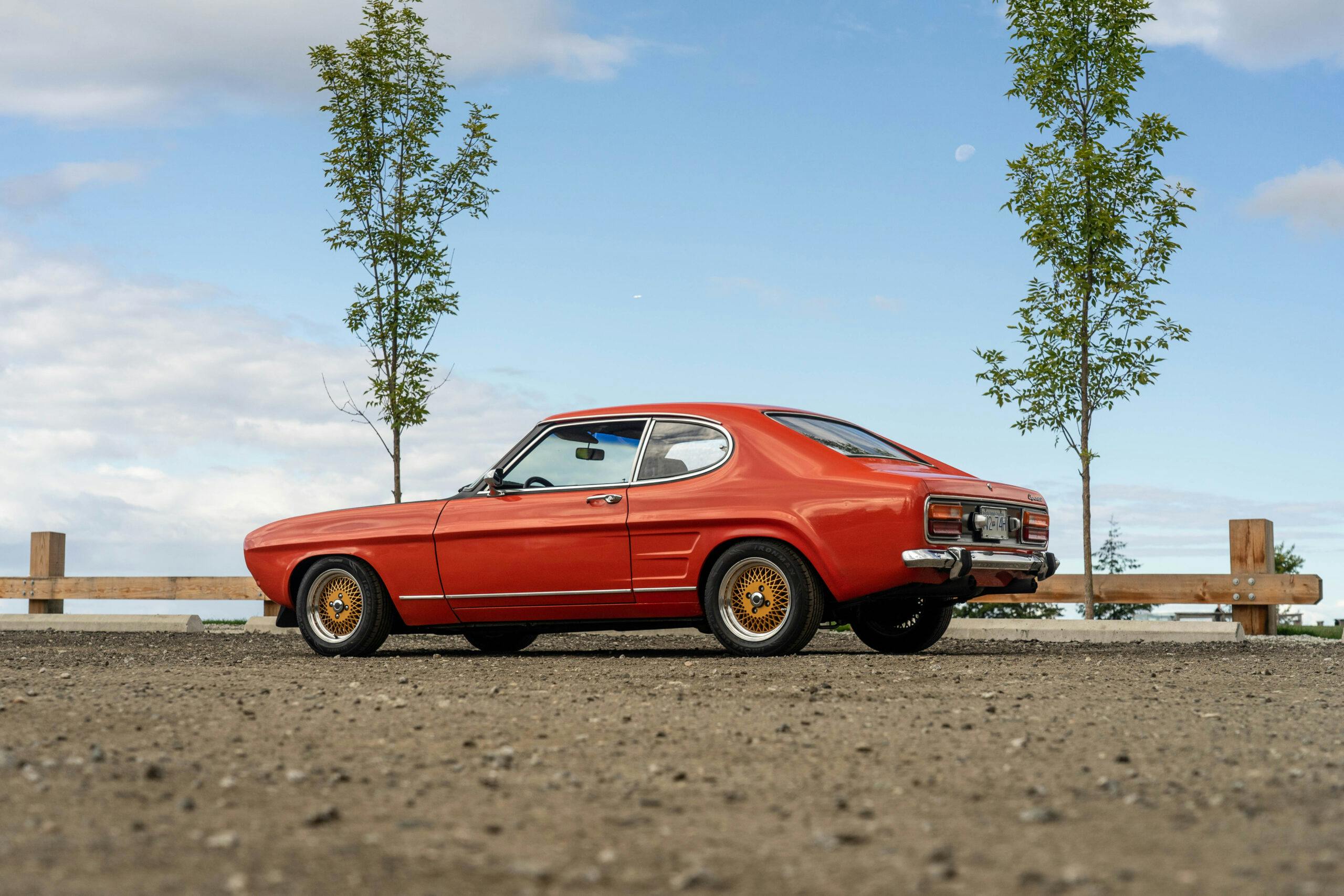

They do indeed have allot in common with Mustangs.
They would rust away just ,,,sitting ,,, in a garage and stuff would just fall apart or fall off for no apparent reason ! LOL
I spent allot of time working in a dealership body shop years back fixing rust issues and trying to keep the side windows on the stupid pulley system that go to the window regulators. Those cable window regulators were a royal pain in the butt to adjust and failed frequently. Water leaks and wind noises were big issues with them too, half of them we got leaked worse than a leaky wooden row boat, even when new .
Ya , they were kinda fun to drive but IMO they lacked quite a bit overall in the reliability and quality department from my experience with them . I think I worked on those more than anything else that came through the Buick / Chevy/ GMC dealership I worked at . I worked on them way more , than anything else we sold , even before they left the lot .
“Crossovers are what most people buy,…..”
Do we have a choice? More accurate would be;
“Crossovers are all anyone builds…….”
Loved mine! 1978 V6 that used to autocross back in the day. They were definitely rust prone, but putting that issue aside, they were a fun little coupe to drive around.
I owned 5 of these beauties. One 2l 4cyl and 4 2.8 V6 all 4 speeds. Loved those cars. I keep looking for a nice used one today but no luck yet.
If the Moostang was introed in 1964-1/2, how was Eurp waiting? That puts the gap at about 9-1/2 years, or am I missing something? BTW, there were Mustangs loose in France by the late ‘sixties! My bro’s roomie at Pau Univ. had one; “ooh, la-la, ze Moostang!”
Hey, that one didn’t say ‘too quickly’! Improvement? Naw, this one did~!
About ’70 or so my parents purchased a dark green capri 2000. I was about 21 yrs old at that time and drove it hard for the car and time. I loved it and at that time I had a ’65 Sunbeam Tiger. In ’75 or ’76 my future wife needed her 1st car and I made her buy a new copper w/ beige vinyl top 4 -spd 2000. She loved it and still talks about it. We finally had to sell because of a growing family in ’82. It was a fun car, had good sporty looks and reliable. As far as reliability, it was very good and the biggest problem I had to attend to was a blown head gasket Wish I could find another for her. My ’66 GT-350 and her Capri, what a garage!
The Capri was a really fun little car. Had a couple…
Mustangs were imported into Europe. Germany had them as early as 1965. They were called T5s. One of my neighbors has one he ordered new.
My dad bought a new ’74 Capri from a Mercury dealer in Newport, RI. He used it mostly for commuting given the high price of gas then. It was a nice brown color with the 2.8L V6, 4 speed, clock and rear window defogger. I bought it from him in early ’77 and kept it until ’83. It was fun to drive and I have fond memories of it.
I am looking for a 1974 V6 manual Capri for my husband. He owned one way, way back and has regretted selling it ever since. If you know of one can you please advise. Thank you.